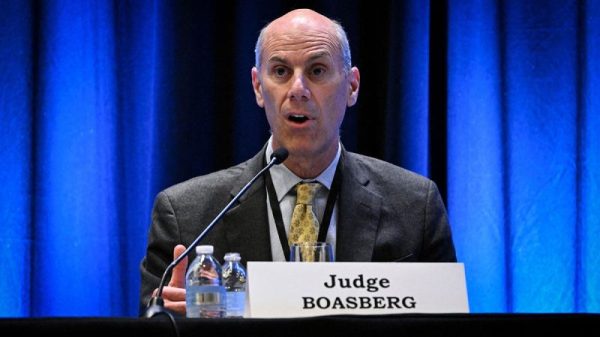The Federal Open Market Committee (FOMC) decided not to increase its interest rate target last week. The range for the federal funds rate remains 5.25-5.50 percent. While inflation isn’t falling as fast as we’d like, the FOMC’s caution is commendable. Monetary policy already looks restrictive by several measures.
Admittedly, inflation is still significantly above the Federal Reserve’s 2-percent target. The Bureau of Economic Analysis recently announced that the Personal Consumption Expenditures Price Index (PCEPI) grew at an annualized rate of 4.27 percent in September. Excluding volatile food and energy prices, the figure was 3.58 percent. Price pressures have eased over the last year, but we still have a ways to go before we’re back to normal.
Although we are not yet back to 2-percent inflation, that doesn’t mean the Fed should continue to tighten. Making policy increasingly restrictive without considering the downstream effects would be reckless. Furthermore, two important measures — interest rates and money growth — suggest monetary policy is tight enough.
One way of judging the stance of monetary policy is by comparing market interest rates to the natural rate of interest — the inflation-adjusted price of capital consistent with full employment and sustainable income growth. The New York Fed estimates the natural rate of interest was somewhere between 0.57 and 1.14 percent in Q2 of 2022.
Let’s compare this to market rates. The current range for the fed funds rate is 5.25 to 5.50 percent. Adjusting for inflation using the headline numbers, that translates into a real interest rate of 0.98 to 1.23 percent. The range becomes 1.67 to 1.92 percent if we use the core numbers. Taken together, this suggests market interest rates are currently above the natural rate of interest, meaning monetary policy is tight. Further tightening may result in a short-term price of capital that is too high to be consistent with economic fundamentals, which could throw a wrench into the economy’s gears.
Monetary data provide additional evidence that policy is already where we want it. The most commonly cited measure of the money supply is 3.58 percent lower today than it was a year ago. Broader monetary aggregates, which weight components of the money supply by how liquid they are, are also falling between 1.73 and 2.62 percent per year. Usually the money supply grows over time in order to meet the demands of a bigger, richer population. That all the popular measures are contracting is astounding.
Monetary tightening by the Fed plausibly explains decreases in the money supply. Higher interest rates cause financial disintermediation: Banks call in loans and don’t issue new ones, or at least slow down the rate of issue. Total bank credit is falling, and commercial and industrial loans are barely growing. The Fed’s policies over the past year are putting the brakes on the financial system. It may be some time still before this policy delivers 2-percent inflation, but it will happen as long as the Fed remains committed.
The best approach for the FOMC is to keep its rate target where it is. We should wait for additional inflation data in November before calling for even-tighter monetary policy. The long-term goal must be getting back to 2 percent, or else inflation expectations will become unanchored, and reducing inflation will become even more difficult. But policymakers shouldn’t make the opposite error of tightening too much. Watchful waiting is still the right move.




































